PROTECT YOUR DNA WITH QUANTUM TECHNOLOGY
Orgo-Life the new way to the future Advertising by AdpathwayEl Valle de Antón, or just El Valle, is a small town built right inside the crater of an extinct volcano, one of the few places like it in the world. It’s about a two and a half-hour drive from Panama City, and as you head up into the hills, the air gets cooler and everything starts to slow down. The town feels quiet and relaxed, with narrow streets, small shops, flower gardens, and tree-shaded homes. All around, the steep volcano walls rise up like a giant circle, giving the valley a peaceful, tucked-away feeling.
This birding trip wasn’t planned, more of a last-minute escape from the heat and humidity of the city. Filled with excitement, we departed from the city around 9am, happy to be heading to one of Panamá’s birding hotspot. That excitement soon faded, as about twenty minutes into the drive, the sunshine disappeared. Dark thunderous clouds rolled in, and soon we were driving through heavy rain that did not let up for the rest of the drive to El Valle.
We pushed on though, filled with optimism. We arrived at our lodging in El Valle, at around 12 noon, where staff with umbrellas met us in the car park and rushed us inside, trying to keep us dry. We checked in chatted with the staff about the weather and received only smiles when we asked what they expected the weather to be like next day.
The rain didn’t stop. It poured all day and well into the night, keeping us confined to our room. The forecast for the next day looked just as bleak, and we began to accept that this trip might be spent entirely indoors or sitting on the open veranda in front our apartment enjoying the sound of the rain.
The following morning though, despite the forecasted weather and the telling smiles of the staff, we awoke to clearer skies with the sun doing its best to break free of the clouds, and to our delight it did just that, what a pleasant morning it was and it looked just right to get in some birding.
Our hastily arranged local guide turned up on time (he lived 3 mins from our lodge he said) and together we left the lodge around 6:30am with no rain in sight. In this post I will share with you a few of the many birds we were able to photograph.
We drove to an area known as La Mesa, not far from the centre of town and along the mountain slopes of the old volcano walls.
Parking the car at the side of the road we set out on foot along the main road. It was not long before the action started and we were engulfed in the chatter of the Tawny Crested Tanager (lifer #1 on this trip)
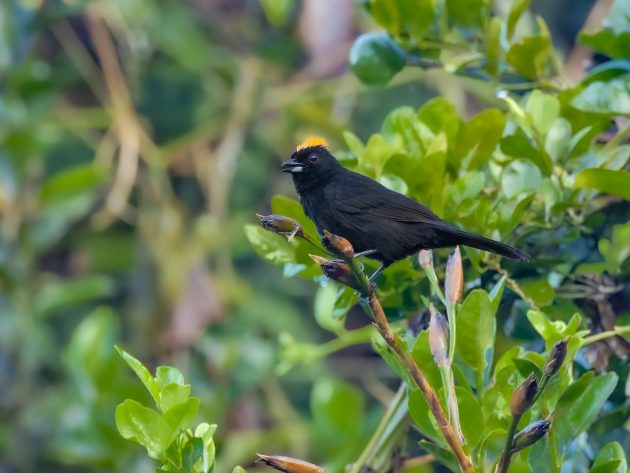 Tawny-crested Tanager
Tawny-crested TanagerAs if not wanting to miss out on the commotion, a flock of Lemon Flame-rumped Tanagers (lifer #2) joined the party. I had seen the Scarlet Flame-rumped Tanagers before but this was a first for the Lemon Flame-rumped Tanagers. They were as noisy as the Tawny-crested and left just as quickly.
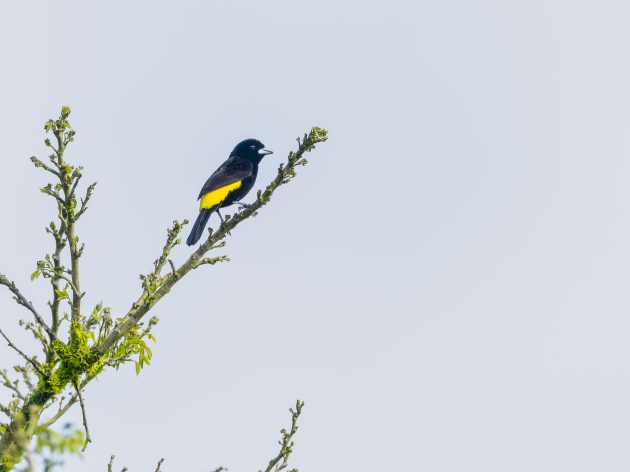 Flame-rumped Tanager (Lemon-rumped male)
Flame-rumped Tanager (Lemon-rumped male)A lone Silver-throated Tanager made an appearance.
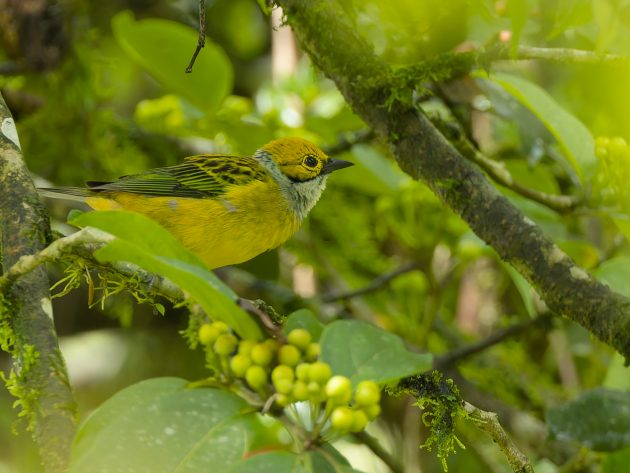 Silver-throated Tanager
Silver-throated TanagerThe beautiful Emerald Tanager made a brief but dignified appearance as well. What a beautiful little bird. (lifer #3)
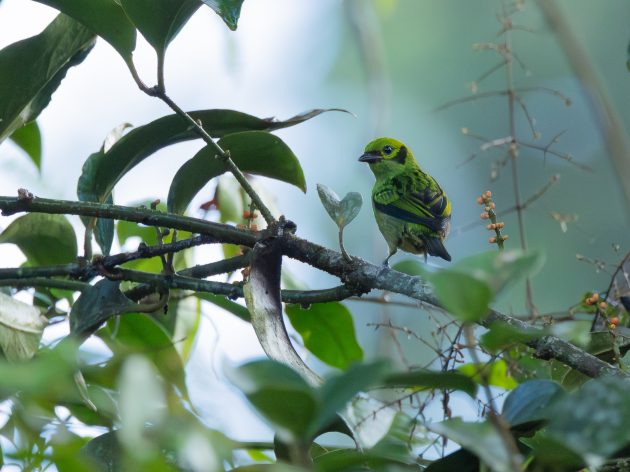 Emerald Tanager
Emerald TanagerPlain-colored Tanagers were all around. Sometimes the quietest birds have the most to say.
This Plain-colored Tanager may not shout with colour like other Tanagers, but tilt the light just right, and you’ll catch a shimmer of sky blue on the wing.
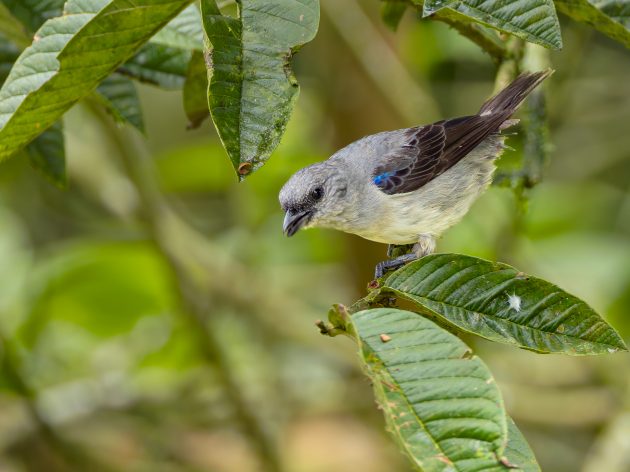 Plain colored Tanager
Plain colored TanagerA Golden-hooded Tanager sat high up on a branch observing us below. I had photographed these birds on many occasions but I am still to get a photograph that I am happy with, sadly I must wait a bit longer as this model decided not to get lower down and soon flew away.
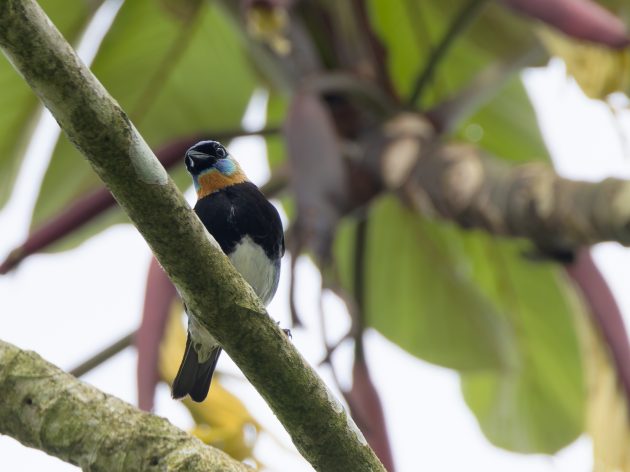 Golden-hooded Tanager
Golden-hooded TanagerThe Dusky-faced Tanager (lifer #4) isn’t flashy, but its constant chatter and social nature make it easy to spot, often in small, noisy groups near the forest edge
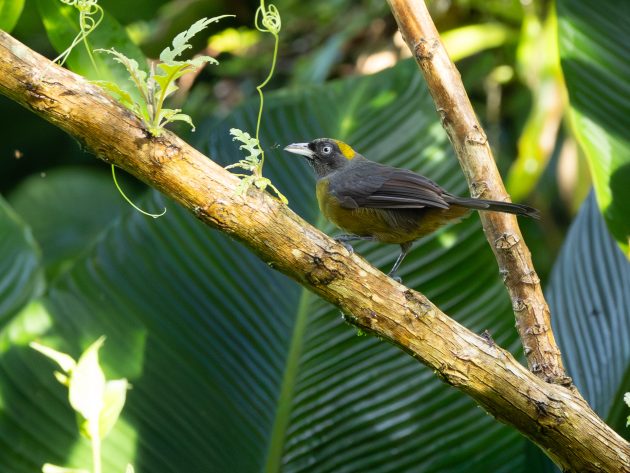 Dusky-faced Tanager
Dusky-faced TanagerWrens may not have flashy colours like some of their tropical neighbours, but what they lack in bling, they more than make up for with personality. There’s just something about the way they bounce around, full of curiosity and confidence, inspecting every branch and mossy crevice like they’re running a tight little operation. I can’t help but feel a cheerful lift in my mood whenever I spot these tiny bird with big vibes.
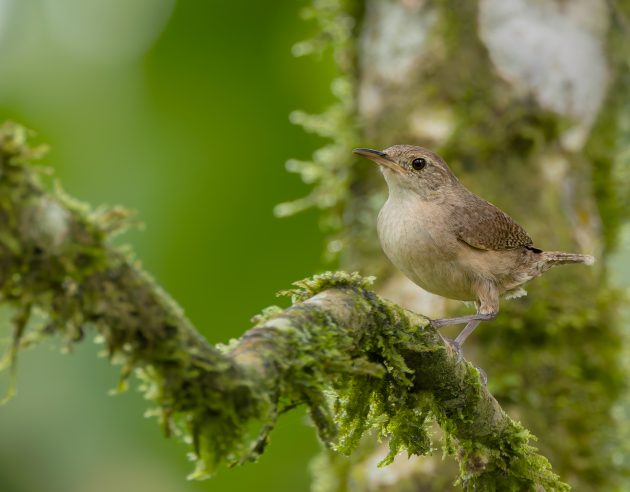 Southern House Wren
Southern House WrenThe Bay Wren (lifer #5) was definitely my bird of the day, with so much sass and style, its rich chestnut body, bold black-and-white face stripes, bouncing around like Wrens do, was a joy to observe and photograph.
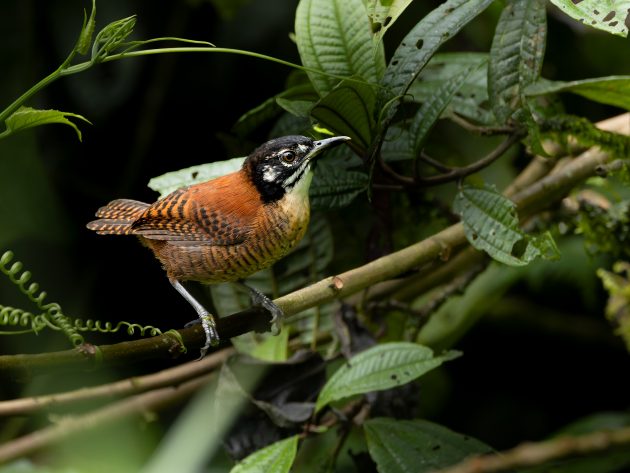 Bay Wren
Bay WrenThe Barred Antshrike is like a moody little ninja in stripes. The male’s got a spiky crest and bold black-and-white bars. You’ll hear their weird little engine-rev call before they sneak out of the bushes, give you a side-eye, and disappear again. Total attitude.
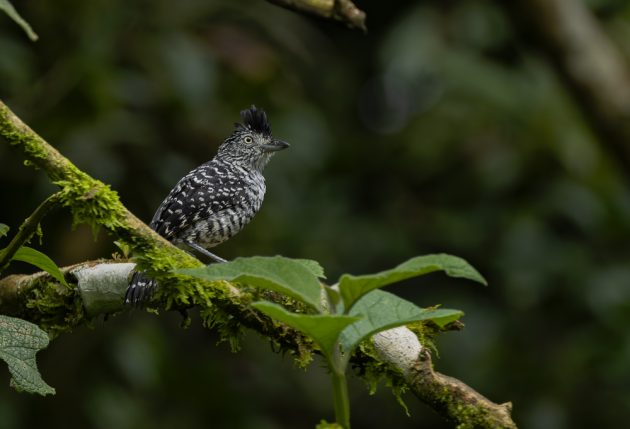 Barred Antshrike (male)
Barred Antshrike (male)High up on a seemingly dead branch, this Keel-billed Toucan, perched quietly for a while observing its surroundings before flying off.
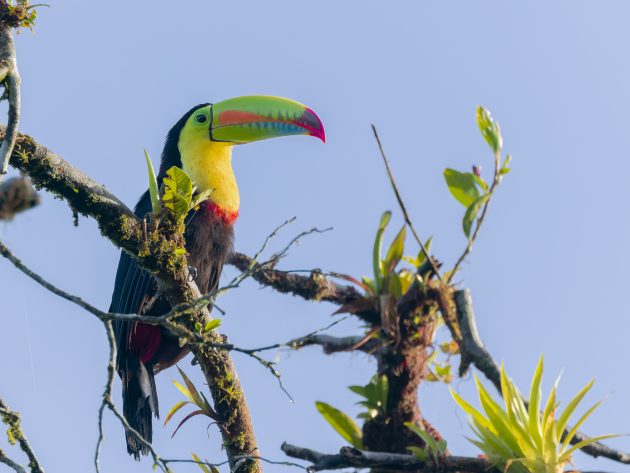 Keel-billed Toucan
Keel-billed ToucanDefinitely breeding season for the Thick-billed Euphonias . They were out in full force doing their thing.
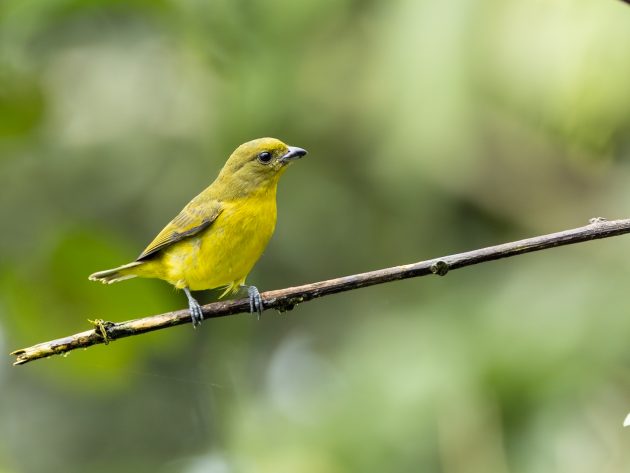 Thick-billed Euphonia (Female)
Thick-billed Euphonia (Female)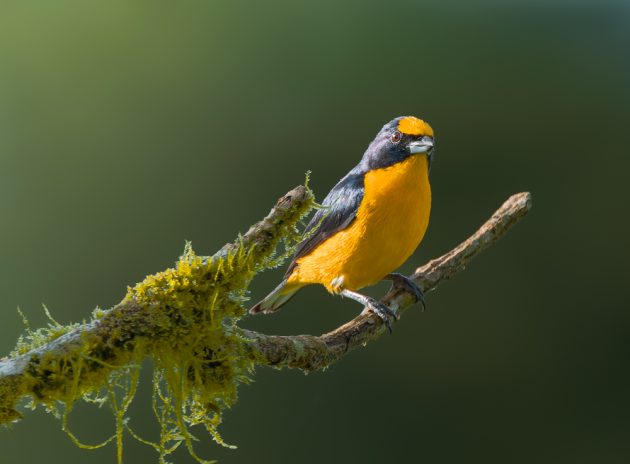 Thick-billed Euphonia (male)
Thick-billed Euphonia (male)The Tawny-capped Euphonia was not going to be outdone and also put in an appearance, sadly the male was nowhere to be seen.
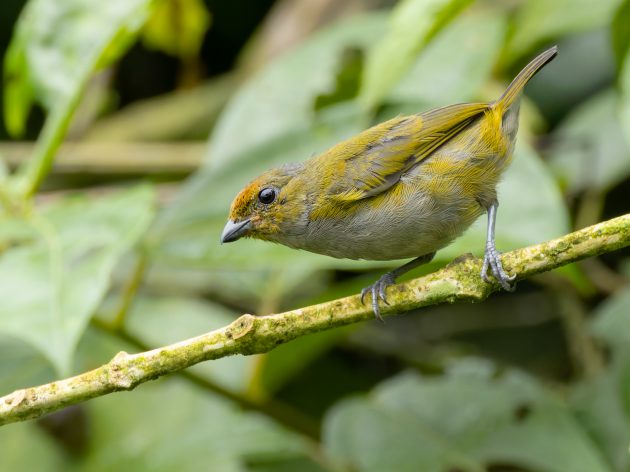 Tawny-capped Euphonia (female)
Tawny-capped Euphonia (female)A few Yellow-bellied Elaenias, joined the show.
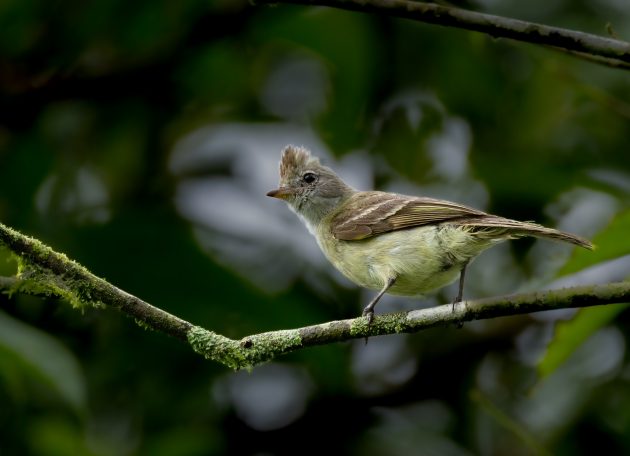 Yellow-bellied Elaenia
Yellow-bellied ElaeniaThis Chestnut-backed Antbird (lifer #6) insisted on staying undercover, deep in the shadowy undergrowth. I would love to be able to photograph this bird in better light.
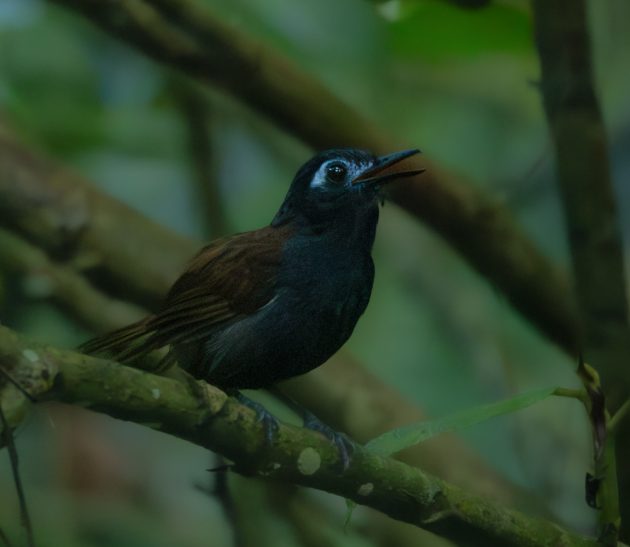 Chestnut-backed Antbird
Chestnut-backed AntbirdThe Scarlet-thighed Dacnis, I have photographed this bird several times, however I am yet to see those famous scarlet thighs. They’re usually hidden under feathers and only show up for a split second during a quick flight or display. Still, even without the red on display, this is still a beautiful bird.
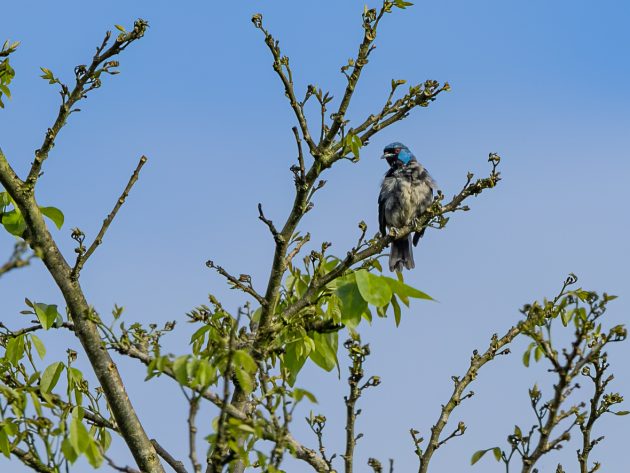 Scarlet-thighed Dacnis
Scarlet-thighed DacnisThe Northern Schiffornis (lifer #7) are not rare but they are pros at hanging out in dense undercover. You can walk right past one and never know it’s there, unless it decides to sing you a few bars of its rainforest ballad. Until recently, the Northern Schiffornis was lumped together with a few lookalike cousins in the “Thrush-like Schiffornis” group. Scientists split them up, and now this bird finally gets its solo career.
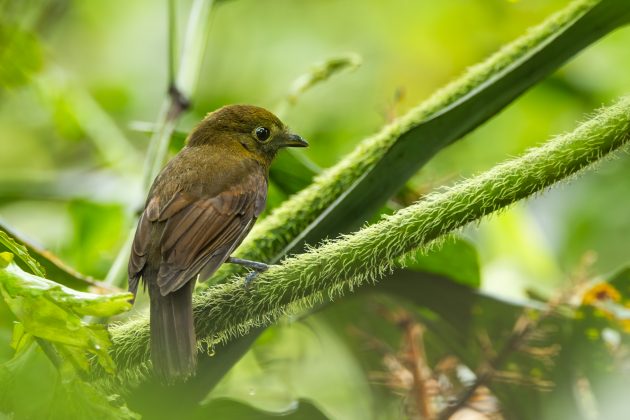 Northern Schiffornis
Northern SchiffornisJust as we were about to head to a new spot, our guide paused, he’d heard a distant call and said it might be a trogon. He asked us to wait by the roadside while he slipped quietly into the thick undergrowth. About ten minutes later, he came back, smiling, and waved for us to follow. We walked carefully into the forest, maybe 200 meters in, and there it was, high up in the trees, the stunning Orange-bellied Collared Trogon.
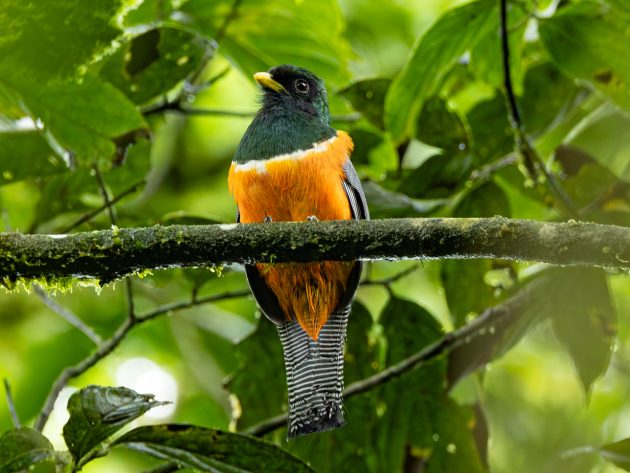 Collard Trogon( orange bellied)
Collard Trogon( orange bellied)After that amazing and totally unexpected sighting of the Trogon, we set off in search of the Toddy Motmot. Our guide, clearly excited, mentioned he knew a secret spot where they usually hang out. But as we climbed higher, the weather turned. By the time we reached the spot, the rain had already started. We waited in the car for about 15 minutes, still hopeful, but eventually had to admit defeat. With the rain getting heavier, we headed back to the lodge, ending what was still a very enjoyable morning of birding. Although we kept to the main road on the trip, not venturing onto the trails, we had a very successful and enjoyable morning of birding.























 English (US) ·
English (US) ·  French (CA) ·
French (CA) ·